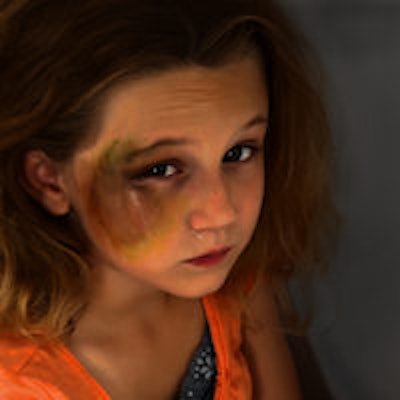
The European Society of Pediatric Radiology (ESPR) has adopted the U.K. guidelines for determining the best imaging strategy in suspected cases of nonaccidental injury in children. The chair of the ESPR's Child Abuse Task Force has called this a "major development."
A Web-based survey distributed to all active ESPR members got a response rate of more than a third (37%). Respondents came from 24 European countries, and the replies demonstrated significant variation amongst institutions, with no consensus regarding radiographic and cross-sectional imaging in the investigation of suspected nonaccidental injury (Pediatric Radiology, 5 July 2014).
The researchers concluded a European consensus protocol in imaging suspected nonaccidental injury was needed and recommended implementing the U.K. guidelines. At the ESPR Child Abuse Task Force meeting in June 2013 in Budapest, members voted in favor of adopting the U.K. guidelines as the European standard, and the information was passed on to the ESPR executive, who concurred with the guidelines in late 2013/early 2014. Pediatric Radiology published an editorial announcing the news on 7 October 2014.
 The injuries may be extremely subtle, Dr. Amaka Offiah said.
The injuries may be extremely subtle, Dr. Amaka Offiah said."This is a major development," noted Dr. Amaka Offiah, chair of the task force, in an email to AuntMinnieEurope.com. "The diagnosis of child physical abuse is problematic, because there is no external gold standard. We cannot completely rely on the history given by at least one of the carers, as that individual may be the perpetrator of any identified injuries."
An incorrect diagnosis of abuse may remove a child from a loving environment, and, furthermore, a missed diagnosis of abuse will return the child to an abusive environment, where episodes of abuse may continue and escalate, possibly culminating in that child's death, added Offiah, a clinical senior lecturer at the University of Sheffield, Academic Unit of Child Health at Sheffield Children's National Health Service (NHS) Foundation Trust in Sheffield, U.K.
"The injuries may be extremely subtle," she stated. "The key investigative tool that we have is the skeletal survey. It follows that this must be of the highest quality as exemplified by the U.K. guidelines. Our European survey identified significant differences in the skeletal surveys being performed, which meant that some children were not receiving the same quality of investigations as others. We hope that by this pan-European adoption of the guidelines, we will improve the care that we provide to children throughout Europe."
In 2008, the Royal College of Radiologists (RCR) and the Royal College of Pediatrics and Child Health (RCPCH) crafted a 60-page document on the standards for radiological investigations of suspected nonaccidental injury. The guidelines cover all imaging modalities and the types of injuries radiologists are likely to encounter.
The guidelines offer practical advice such as: "If a head injury is suspected, performing a complete skeletal survey should not delay obtaining a CT scan of the head, although x-rays of clinically apparent injuries would still be undertaken."
Despite being issued six years ago, there hasn't been any consistency among departments regarding the projections and quality of images obtained when child abuse is suspected, which national surveys from the past decade have highlighted. Anecdotally, the task force believed the publication of the national surveys improved the quality of skeletal surveys in the U.K. and, therefore, the accuracy and speed of diagnosis in suspected child abuse cases. However, they weren't sure internationally, so the task force undertook a Europe-wide survey of ESPR members.
For the guidelines to be more readily adopted, they must be translated into European languages, which is currently underway. Another pan-European survey is planned in a few years time.
In addition, a U.K. panel, of which Offiah is a member, is currently updating the guidelines. Chairing the panel is Dr. Kath Halliday, a consultant pediatric radiologist at Nottingham University Hospitals NHS Trust in the U.K. and chairperson of the British Society of Pediatric Radiology.
A publication date for the new evidence-based guidelines has not been set, according to Offiah, but when they are available, the guidelines will also be translated into various European languages.



















